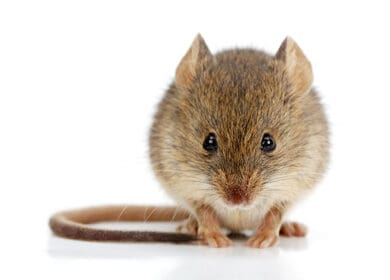C3H/HeJ
C3H/HeJ
| Strain details | |
|---|---|
| Nomenclature | C3H/HeJOzarc |
| Common name | C3H |
| Synonyms | C3H/HeJ, C3H Heston, C3 |
| Strain | Inbred |
| Coat colour | Agouti (A/A) |
| Species | Mouse |
| Genetic background | - |
| JAX stock number | 000659 |
| Location | Area Oz1 |
| Weekly wean target | 10 males, 10 females |
Strain description
- MHC haplotype: H2Kk
- Complement factor: C5 normal
- C3H/HeJ mice are homozygous for retinal degeneration 1 mutation (Pde6brd1), which causes blindness by weaning age.
- There is also a high incidence of hepatomas in C3H mice (reportedly 72-91% in males at 14 months, 59% in virgin females, 30-38% in breeding females)
- Typically unresponsive to lipopolysaccharide (LPS) due to a B-cell deficiency (Anderson and Ostermann, 1980).
- Highly susceptible to infection by Gram-negative bacteria such as Salmonella enterica, makin them a valuable model for studying bacterial infections.
- Spontaneous development of corneal opacities. Retina lack of photoreceptors.
- Normal hearing.
- Spontaneous development of alopecia areata (AA) at a reported incidence of approximately 0.25% by 5 months of age.
- Cardiac mineralisation/calcinosis, providing a model for cardiovascular biology research.
- The C3H parent strain was developed by LC Strong in 1920 from a cross of a Bagg albino female with a DBA male followed by selection for high incidence of mammary tumors (L.C. Strong, 1935).
- C3H/HeJ mice are extensively used in research to study various aspects of immunology, infection, inflammation, and related diseases. They are also utilized in studies related to cancer, neuroscience, and auditory research due to their unique genetic characteristics and susceptibility to infections.
Past ARC and transfer reports:
Current Ozgene ARC reports (from 01-Jun-2023)
- This strain is housed in Area Oz1
- Please see Oz1 health reports on our Biosecurity page
- These mice are sold subject to The Jackson Laboratory’s Conditions of Use and also the Australian Patent Number (2004268530). Information regarding conditions of use is available at: JAX General Terms and Conditions.
-
JAX mice are the gold standard for animal model research
- Ozgene ARC terms and Conditions
- Mouse images are representative only. Actual phenotypes may vary based on genotype, sex, age, husbandry, health status, and other factors.
- See https://www.jax.org/strain/000659 more strain information.


